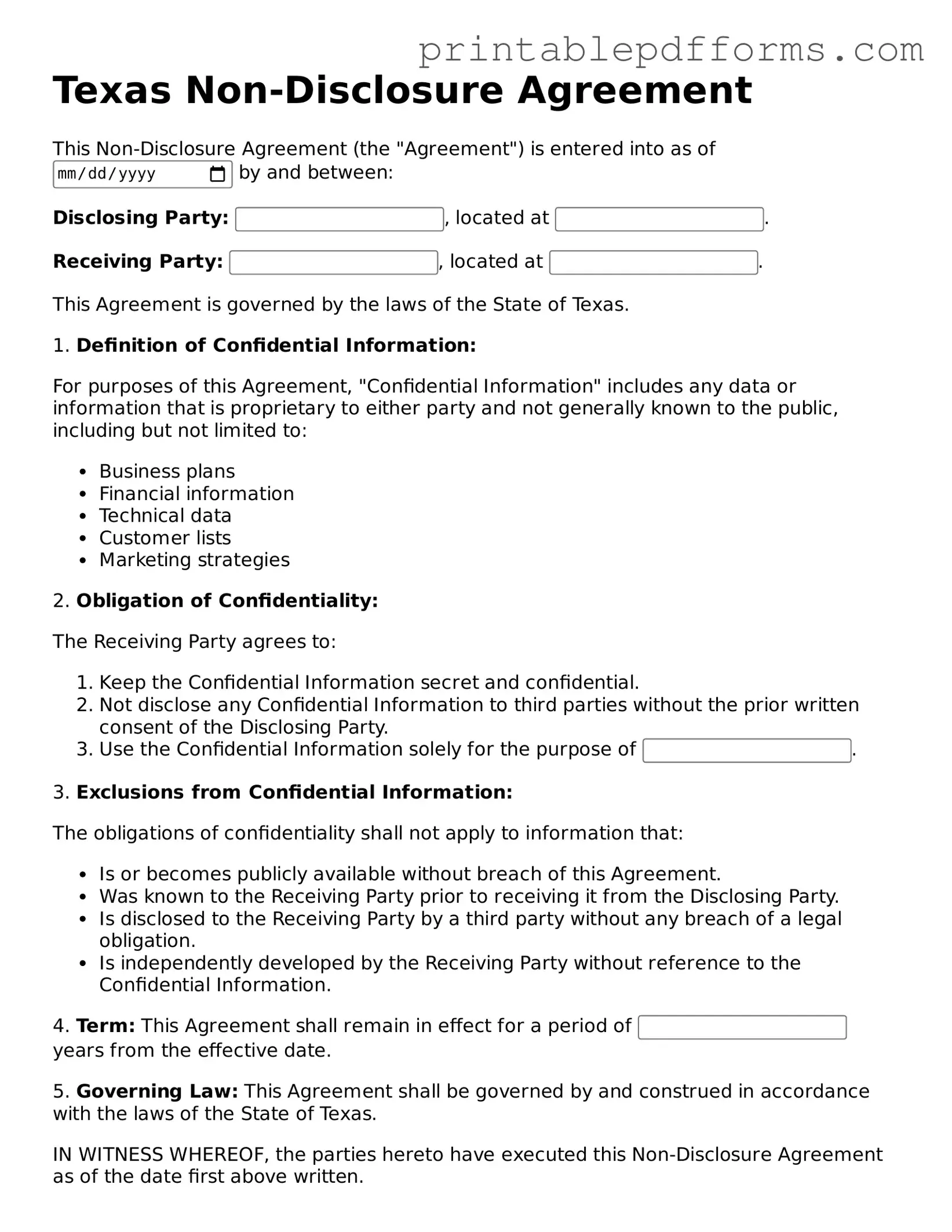Texas Non-disclosure Agreement Document
A Texas Non-disclosure Agreement (NDA) is a legal document that helps protect sensitive information shared between parties. This form establishes confidentiality and outlines the obligations of each party regarding the handling of proprietary information. To ensure your information remains secure, consider filling out the form by clicking the button below.
Create This Document Online
